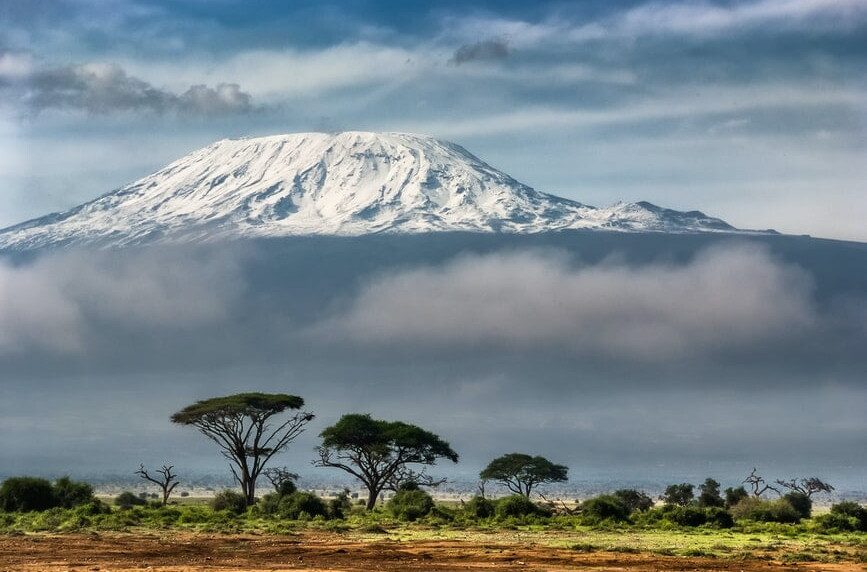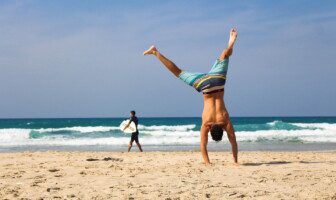
Scaling the highest peak on the African continent is a fantastic adventure. Just imagine making your way through the beautiful rainforest and then passing Martian landscapes towards the snow-capped summit of the Roof of Africa. Without any doubt, such an adventure requires thorough preparation. Check out some best tips on preparing to climb Mt Kilimanjaro with Follow Alice to be all ready to experience those breathtaking sunrises, star-filled skies, and far-reaching views across the wild plains of Tanzania.
5 Challenges You will Face On Kilimanjaro Trek
Although reaching the peak of Kilimanjaro is generally considered to be a technically easy climb, the success of this adventure actually depends on your experience and some other factors.
Indeed, how familiar you are with high altitude, multi-day trekking, and carrying a backpack will make a difference.
Let’s take a closer look at some challenges you are likely to face while climbing Mt Kilimanjaro and ways to tackle them.
1: Searing Heat, Heavy Rain, Freezing Temperatures, And High Winds — All In One Week
Mt Kilimanjaro has a high altitude level, and you actually cross five different climate zones before you reach its peak. That is why you’ll possibly experience rain, wind, hot and freezing temperatures during your climb.
You start in the hot and humid rainforest, and as you increase in elevation, the landscapes and temperatures change until you get to the coldest Arctic Zone on the top of the mountain. Also, keep in mind that at night temperatures sharply drop, no matter the altitude you’re currently at.
Solution
Pack appropriate clothes to be ready for different weather conditions. Plus, give yourself more time to acclimatize. Unless you have considerable mountain climbing experience, it’s a good idea to pick a longer route to have more time to get used to the changing climate.
2: High UV Levels
At higher altitudes, the intensity of ultraviolet (UV) radiation increases as there is less atmosphere above to absorb the ultraviolet rays. Plus, the sun gets extremely strong when you are close to the equator. These two factors combined make Kilimanjaro a hot spot in terms of UV levels. Remember that intense UV rays can cause skin burns and eye problems.
Solution:
To protect yourself from the negative effects of ultraviolet during your climb, make sure you include these items in your Kilimanjaro checklist:
- Sunscreen with SPF 50 or higher and will be great if the product contains zinc oxide.
- Sunglasses that are able to filter at least 95% of ultraviolet rays.
- Sunscreen lip balm, the higher SPF, the better. A quick tip: bring several sticks as these little things are easy to lose in your backpack.
- Something to cover your head (especially ears) and neck.
3: High Altitude
At a whopping 5,500 meters (18,044 feet) above sea level, the majestic Kilimanjaro is much taller than average, which means you’re going to experience a high altitude level together with the challenges it presents to your body. The thing is that the oxygen level in the air decreases as you climb more than above sea level. And the oxygen level becomes very thin and low above 8,100 feet altitudes (compare this to Kilimanjaro’s 18,044 feet).
The low amount of oxygen in the air at high altitudes causes high-altitude illness. However, if you stay at a high altitude for a longer time, your organism gets used to the low oxygen level, and you don’t get sick from it.
There are several types of high altitude sickness. Acute Mountain Sickness, or AMS, is the most common one. The symptoms of AMS typically include slight headaches, loss of appetite, nausea, and fatigue.
Solution:
- Go up slowly, choose the route that provides more breaks. For example, Follow Alice offers a trip via the Lemosho route, which is the best one to let your body acclimatize well to the increases in elevation.
- Get enough sleep. A good night’s sleep is crucial to maintain your energy levels and prepare your body for the next day.
4: Dehydration
At high altitudes, the air tends to be drier than at the foot of a mountain, and your normal body fluid loss may get twice as great. The lower amount of oxygen makes you breathe deeper and more frequently and thus lose more body water.
In addition, you’ll definitely be more physically active while climbing Kilimanjaro than at home, and a lot of water will be lost through sweating. The body’s natural response to this is to trigger mechanisms that can help regain normal temperature, which involves sweating, meaning the loss of vital water stores. All these things lead to dehydration.
The symptoms of dehydration include thirst, dry mouth, lips and nose, headaches, fatigue, rapid breathing, dizziness, low blood pressure, muscle cramping, and sometimes painful kidneys. Dehydration is dangerous, and, in addition, it’s crucial to prevent it because its symptoms are similar to AMS. Staying hydrated enables easy recognition of AMS.
Solution:
To stay properly hydrated, you need to drink 5 to 6 liters of water every day on the trek. You might find it incredibly difficult unless you are used to this. So it’s a good idea to start practicing to drink 5-6 liters of water every day at least two weeks before you hit the trail. Last but not least, never drink more than 500-600 ml at a time.
Consider Reading: Reasons of Trek to Triund
5: Climbing Kilimanjaro Requires Being Physically And Mentally Fit
Conquering the Roof of Africa is a multi-day adventure that demands physical effort. If you’re unfit and physically unprepared, the trek is likely to be hard for you. Of course, you don’t need to be a marathon runner. However, you should be fit enough to walk many hours uphill carrying a backpack. And do it again within the next several days. What is more, your fitness level determines how well and fast you are going to recover from each day of hiking tiredness.
Your mental fitness is equally important. Long days on the trail, sleeping in tents, being far away from home, and experiencing harsh weather conditions all feed into the emotional difficulty of the climb. The final part of the trek is particularly tough, and it all depends on mental resilience. That keeps you boosted and encourages you to go to the top.
Consider Reading: Ways to Enjoy More Active Lifestyle
Solution:
If you feel that you’re not fit enough for this multi-day climb, start your preparation as early as possible. The main aspects you’ll need to work on are:
- Endurance and cardiovascular fitness
- Leg, core, and back strength
- Flexibility and balance (stretching)
Conclusion:
To make your trip less emotionally challenging, always keep in mind the reason you’re here. Make stops to delight in the beautiful sceneries of Kilimanjaro, and view your adventure as a gift you’re lucky to experience.
Read Also:






























